 CareerSafe was founded in 2003 under the core belief that no job is worth a young worker’s life. CareerSafe has expanded their focus to include the whole worker. From safety and health training to employability skills and cybersecurity awareness, CareerSafe is focused on providing the foundational skills workers need to launch successful careers.
CareerSafe was founded in 2003 under the core belief that no job is worth a young worker’s life. CareerSafe has expanded their focus to include the whole worker. From safety and health training to employability skills and cybersecurity awareness, CareerSafe is focused on providing the foundational skills workers need to launch successful careers.
Starting with Safety
A first step of safety training can occur as soon as middle school or freshman year, with CareerSafe’s StartSafe program. A site-license specific training will provide five (5) hours of core content, as well as the opportunity to explore additional pathways. StartSafe is the perfect introduction to OSHA and workplace safety, covering topics such as:
- Personal Protective Equipment (PPE)
- Walking-Working Surfaces
- Bloodborne Pathogens
- Electrocution Hazards
- Workplace Violence
OSHA 10-Hour Training
The next obvious step in each learner’s safety training is OSHA 10-Hour Training in either General Industry or in Construction with several industry-specific pathways including:
- Healthcare
- Public Safety
- Agriculture
- Automotive
- Cosmetology
- Culinary
- Manufacturing
- Veterinary
OSHA 10-Hour training is purchase per seat and registered through the U.S. Department of Labor, granting each student a recognized OSHA General or Construction Industry card.
Cyber Safety Awareness
Technological advances have made the digital world an integral part of everyday life. Unfortunately, that means online risks for young people are also becoming more prevalent. The CareerSafe Cyber Safety Awareness Library contains courses with grade-level focused topics for 6th-12th grades and covers situations like cyberbullying, sexting, and the consequences of school threats. This is a site license program as well.
Employability Skills
The final step on preparing learners for workplace readiness is the CareerSafe library of Employability skills.
These courses are available per seat or by site license and they provide quality resources and techniques for building essential skills and strategies applicable in all professional fields. Topics include:
- Written communication
- Cybersecurity essentials for work
- Interview skills
- Critical thinking
- Communication skills
- Time management
- Teamwork
- Personal financial management
- Materials management
When you add in CareerSafe’s best-of-class customer service, innovative online curriculum, and effective teacher tools, there are numerous ways to educate your learners.
By offering the whole suite of CareerSafe products, from StartSafe to OSHA 10-hour training, cyber security training to employability skills, the result is a well-rounded, educated young worker who is capable of staying safe in the workplace.
Scaling Across Your State
CareerSafe believes that all students deserve the right to a safe and fair workplace. What better way to prepare your students to remain safe in the workplace than to equip them with the knowledge and understanding of OSHA safety training while still in high school. Because our courses easily integrate within your teacher’s existing CTE curriculum and are created to align with the National Career Clusters Framework this opportunity allows for states to scale this course across all pathways for every student. We have Account Executives available across the country to walk you through how to get set up today. Let us help you set your students on a path to success.
Sherry Pruitt, Executive Director of CareerSafe
Sherry.Pruitt@careersafeonline.com
888-614-7233


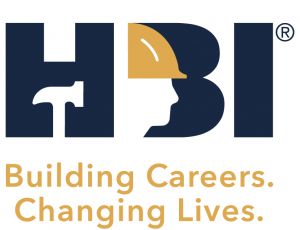

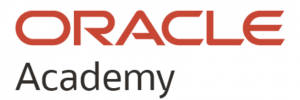 As Oracle’s global philanthropic educational program (FREE), Oracle Academy is open to educators around the world to advance technology education, skills, innovation, diversity and inclusion. We offer academic institutions and their educators free teaching and learning resources ― including curriculum, cloud, software and educator professional development ― that help prepare millions of learners with hands-on practice and career-relevant skills.
As Oracle’s global philanthropic educational program (FREE), Oracle Academy is open to educators around the world to advance technology education, skills, innovation, diversity and inclusion. We offer academic institutions and their educators free teaching and learning resources ― including curriculum, cloud, software and educator professional development ― that help prepare millions of learners with hands-on practice and career-relevant skills.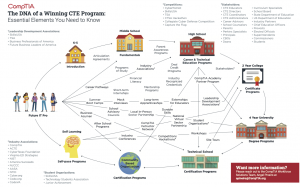
 As a State Career and Technical Education (CTE) leader, you know the value of CTE in preparing learners for a wide range of work opportunities. But to elevate CTE’s impact, it’s essential to use your expertise to build programs that grow and thrive.
As a State Career and Technical Education (CTE) leader, you know the value of CTE in preparing learners for a wide range of work opportunities. But to elevate CTE’s impact, it’s essential to use your expertise to build programs that grow and thrive. As part of its response to the coronavirus pandemic, the federal government provided a total of $280 billion for K–12 and postsecondary schools over three rounds of unprecedented investment into education. For perspective, $280 billion is 200 times the annual allocation for Strengthening Career and Technical Education for the 21st Century Act (Perkins V). The Elementary and Secondary School Emergency Relief Fund (ESSER I, II, III) portion of each of the three emergency response bills totaled $189 billion for a range of uses from education technology to building costs and staff salaries. While states and districts were given wide discretion on how to invest the money, there are time limits for the money to be spent.
As part of its response to the coronavirus pandemic, the federal government provided a total of $280 billion for K–12 and postsecondary schools over three rounds of unprecedented investment into education. For perspective, $280 billion is 200 times the annual allocation for Strengthening Career and Technical Education for the 21st Century Act (Perkins V). The Elementary and Secondary School Emergency Relief Fund (ESSER I, II, III) portion of each of the three emergency response bills totaled $189 billion for a range of uses from education technology to building costs and staff salaries. While states and districts were given wide discretion on how to invest the money, there are time limits for the money to be spent. As educators, can we influence the world 10,000 years from now?
As educators, can we influence the world 10,000 years from now?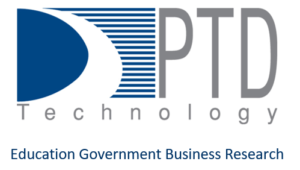


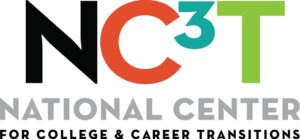 The most common image when talking about workforce development is that of a “leaky pipeline;” where we lose people at every key transition point along the way to the labor pool. In high school, we lose learners who drop out before graduation. Among those who do graduate, we lose the ones who don’t go on to some form of postsecondary education. Among those who do pursue postsecondary credentials, we have another round of dropouts who leave before earning a degree or certification. As a result, the final pool of qualified workers is much smaller than the pool we started out with.
The most common image when talking about workforce development is that of a “leaky pipeline;” where we lose people at every key transition point along the way to the labor pool. In high school, we lose learners who drop out before graduation. Among those who do graduate, we lose the ones who don’t go on to some form of postsecondary education. Among those who do pursue postsecondary credentials, we have another round of dropouts who leave before earning a degree or certification. As a result, the final pool of qualified workers is much smaller than the pool we started out with.